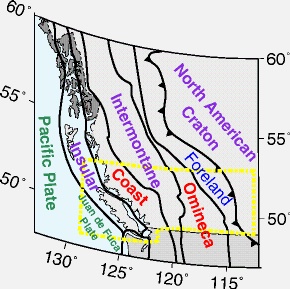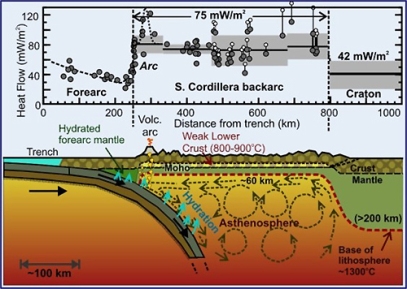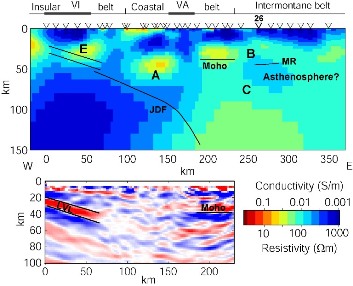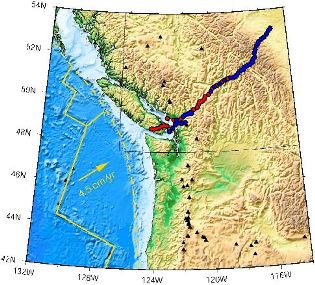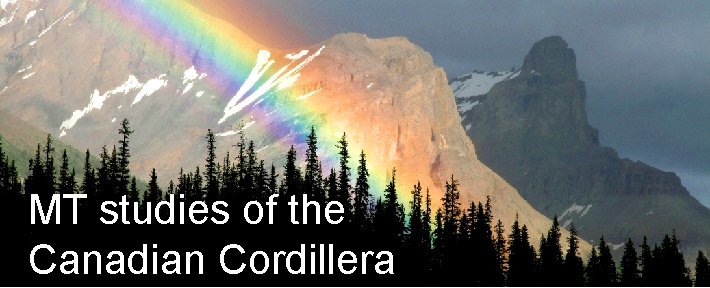
The Canadian Cordillera is an active plate boundary with a long geological history. Continued subduction has led to the growth of the North American continent through terrane accretion. The Canadian Cordillera comprises five main belts shown in the figure below.
This orogen was extensively studied during the Southern Cordillera Transect of the LITHOPROBE project. The LITHOPROBE magnetotelluric data revealed a widespread mid-crustal conductor that was explained on the basis of crustal fluids. The LITHOPROBE studies in the Canadian Cordillera did not use long-period magnetotellurics that are needed to image the lower crust and upper mantle (asthenosphere).
High heat flow and other evidence suggest that shallow convection occurs in the back are of the Canadian Cordillera, as illustrated in the figure above from Hyndman et al., (2005).

To investigate the deeper structure of the Cordillera the University of Alberta has been collecting long-period data since 2003.
In 2003-4 data were collected at 50+ stations on the S-line transect from Vancouver Island to Edmonton. Stations in red used LIMS instruments and those in blue used NIMS instruments. Results from the western part of the S-line were published Soyer and Unsworth (2006) who showed that the upper mantle in the back arc has an unusually low resistivity, consistent with shallow asthenosphere.
For larger versions, click on the images above.
In 2006 a second parallel profile (N-line) was recorded from Clearwater BC to Hinton Alberta.
Results from both profiles are described in Rippe et al., (2013)


